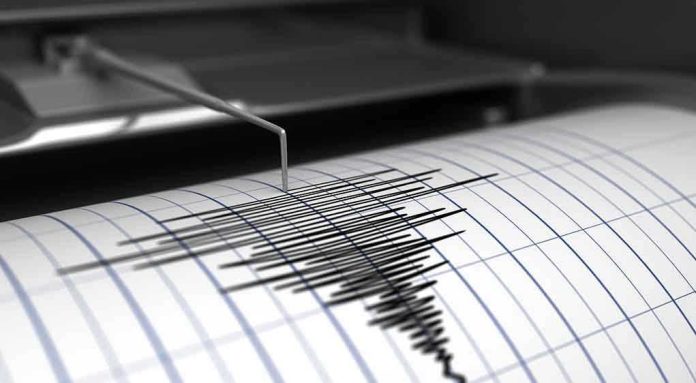
A devastating 6.9-magnitude earthquake struck the Philippines, exposing critical infrastructure failures that left at least five dead and thousands fleeing their homes as buildings collapsed and power grids failed across multiple provinces.
Story Highlights
- 6.9-magnitude earthquake hits Cebu Province, killing at least five people with widespread structural damage
- Multiple critical buildings collapsed including sports complex, church, and restaurant while mall catches fire
- Mass coastal evacuations triggered by tsunami fears as power outages affect millions across region
- Infrastructure vulnerabilities exposed despite previous earthquake experiences and building code improvements
Earthquake Devastates Central Philippines Infrastructure
The 6.9-magnitude earthquake struck off Cebu Province at 21:59:43 PST on September 30, 2025, causing immediate structural failures across the Central Visayas region. Multiple critical buildings collapsed, including a sports complex, church, and fast-food restaurant, while a shopping mall caught fire. The National Grid Corporation of the Philippines reported significant damage to substations and transmission lines, leaving millions without power across several provinces.
Philippine Institute of Volcanology and Seismology recorded a powerful mb 5.2 aftershock just 13 minutes after the main event at 22:12 PST. The earthquake’s impact extended far beyond the immediate epicenter, with tens of thousands in the most severely affected zone and millions feeling the tremors. Local government units immediately began coordinating evacuations, particularly in coastal areas where tsunami advisories were issued.
Mass Evacuations Follow Tsunami Warnings
Coastal communities across the region evacuated their homes following PHIVOLCS tsunami advisories triggered by minor sea-level disturbances. The earthquake’s offshore location heightened concerns about potential waves, prompting authorities to prioritize public safety over property concerns. Schools and government offices in multiple municipalities closed immediately for mandatory safety assessments, with some local governments considering declarations of states of calamity to access emergency resources.
Residents flee homes as powerful earthquake hits Philippines https://t.co/LsLqQ97eVV pic.twitter.com/EuxuRxH2KJ
— The Independent (@Independent) September 30, 2025
The evacuation response demonstrated both strengths and weaknesses in the region’s disaster preparedness systems. While early warning systems functioned effectively, the widespread infrastructure damage complicated evacuation routes and emergency communications. Power outages affected millions beyond the immediate impact zone, disrupting normal emergency coordination channels and highlighting the interconnected nature of regional utility systems.
Historical Vulnerabilities Remain Despite Past Lessons
This earthquake represents another test of infrastructure improvements made since previous devastating events, including the 2013 Bohol earthquake and 2019 Eastern Samar earthquake. Despite enhanced building codes and increased public awareness from past disasters, enforcement remains inconsistent across the densely populated archipelago. The Philippines’ location within the Pacific Ring of Fire makes it inherently vulnerable to seismic activity due to the convergence of major tectonic plates.
PHIVOLCS issued a bulletin at 04:52 AM stating no further significant aftershocks or additional damage was expected, though damage assessments continue. The region’s mixed construction quality and high population density create ongoing risks, particularly for marginalized communities with limited access to disaster-resistant housing. Recovery efforts now focus on restoring critical infrastructure while evaluating long-term resilience improvements for future seismic events.
Sources:
2025 Cebu earthquake – Wikipedia
PHIVOLCS Earthquake Information Bulletin







